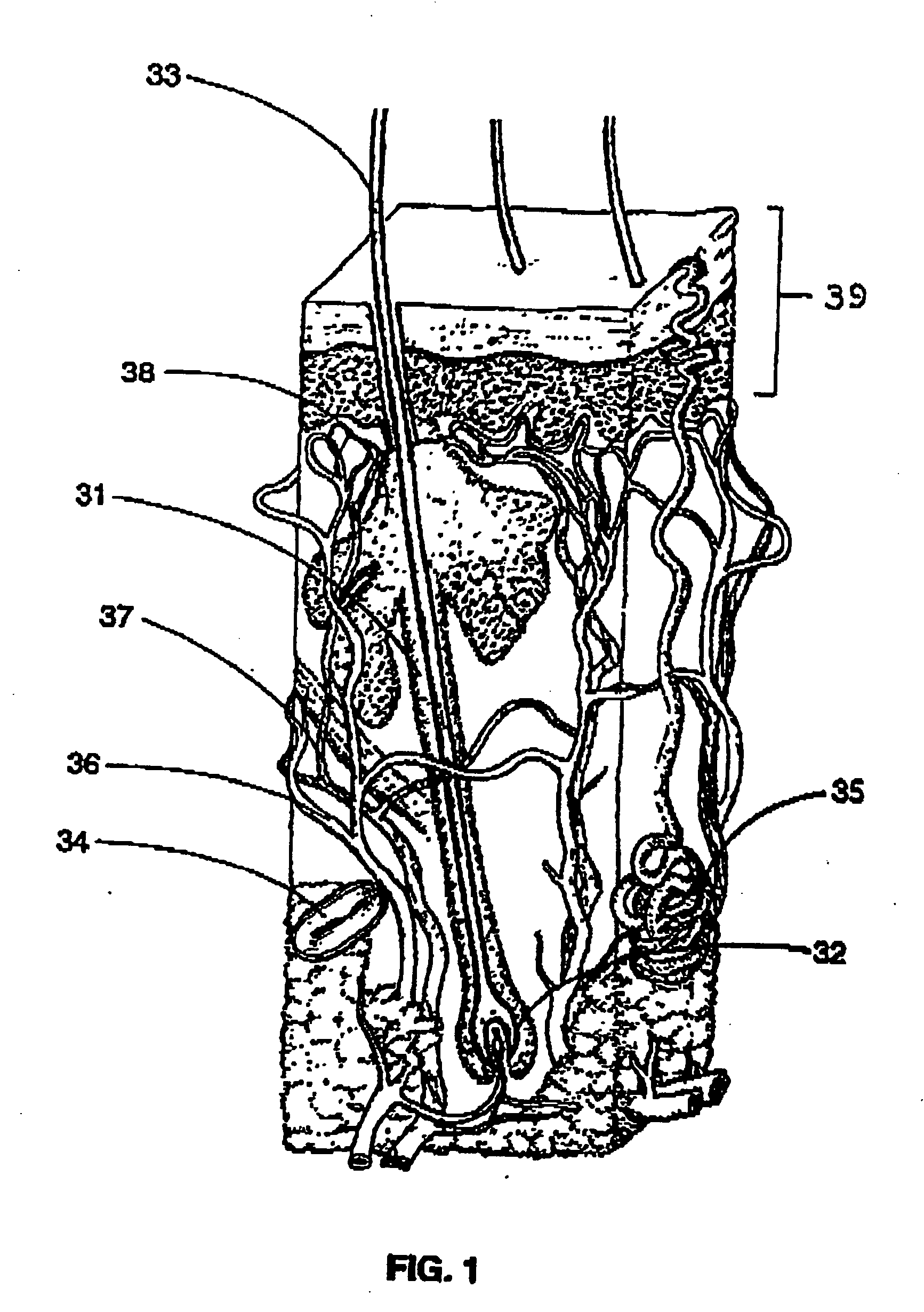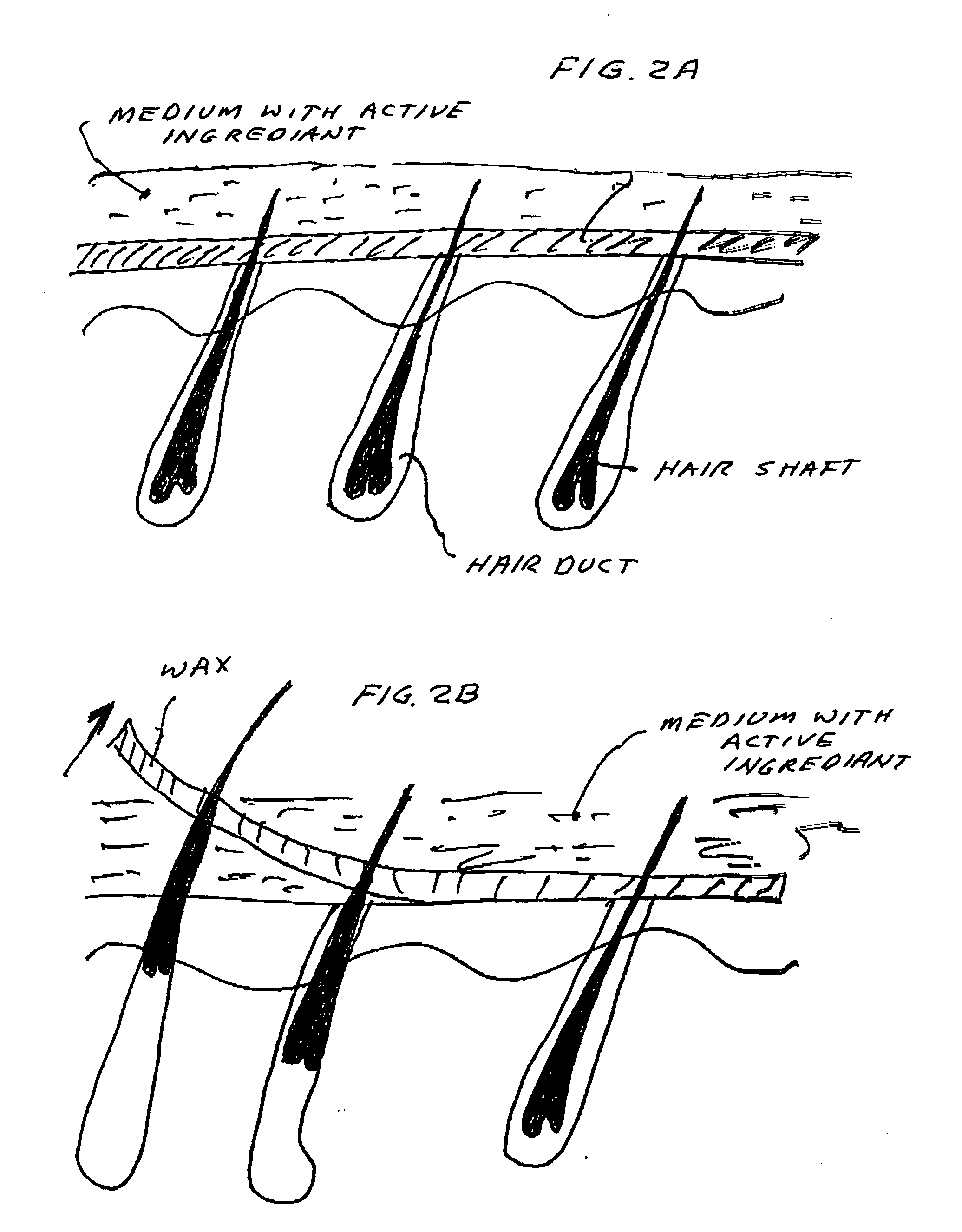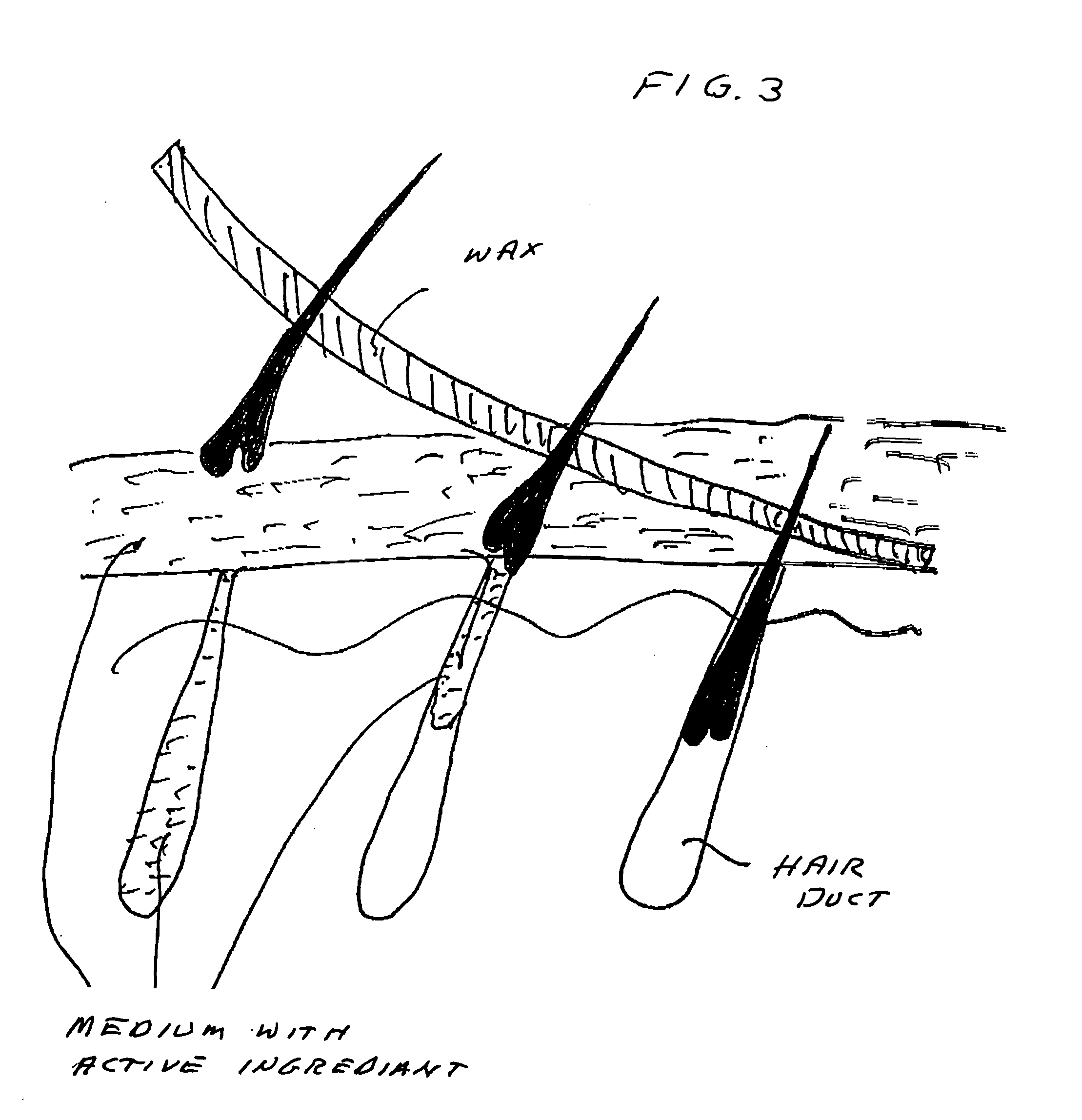Device and method for hair growth from stem cells
- Summary
- Abstract
- Description
- Claims
- Application Information
AI Technical Summary
Benefits of technology
Problems solved by technology
Method used
Image
Examples
Embodiment Construction
Collecting Stem Cells
[0011] Undifferentiated stem cells are separated out from the mid-derm bulge area of hair papilla in the tissue samples. For example, the tissue samples can be micro-surgically dissected to locate and separate out the stem cells. Cells may also be collected from tissue other than hair type tissue. For example, stem cells from fat tissue may be collected. However, as explained in the next section. Transfection of stem cells into hair cells is more difficult than transfection of stem cells from the mid-derm area of the papilla since these latter stem cells are already partially differentiated into the direction of skin, nail and hair tissue. Stem cells used in preferred processes may be those taken form the hair growth patient being treated but they may also be stem cells from other people or previously frozen stem cells from a storage location.
Cloning and Transfecting the Cells
[0012] The separated stem cells are then preferably cloned by culturing the...
PUM
 Login to View More
Login to View More Abstract
Description
Claims
Application Information
 Login to View More
Login to View More - R&D
- Intellectual Property
- Life Sciences
- Materials
- Tech Scout
- Unparalleled Data Quality
- Higher Quality Content
- 60% Fewer Hallucinations
Browse by: Latest US Patents, China's latest patents, Technical Efficacy Thesaurus, Application Domain, Technology Topic, Popular Technical Reports.
© 2025 PatSnap. All rights reserved.Legal|Privacy policy|Modern Slavery Act Transparency Statement|Sitemap|About US| Contact US: help@patsnap.com



